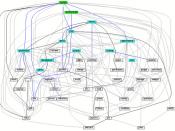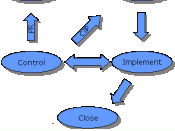Quality is often associated with expense. We expect to pay more for a gold-nibbed fountain pen, for example, than a regular pall-point pen. A five star hotel is considerably more expensive than a private guesthouse. Even comparing like with like, consumers are often willing to pay for better quality.
What pleases a customer most, however, is superior quality for the same amount of money, or even better, for less money. Although some products and services may have magical quality about them, quality is rarely the result of magic. Output is strictly the result of input. For example, a gardener whose garden is always looking healthy owes his success not to luck or magic, but to maintaining and watering his plants on a daily basis. Quality must be worked at and consciously achieved. Although companies only get out of their production systems what they put into them, efforts must be carefully directed if the results are to be satisfactory.
Total quality management requires every employee to be involved in improvement efforts to create better processes or better ways to perform the job.
Like a garden, Total Quality Management (TQM) is based on a continuous improvement approach, meaning it is never ending. In order to remain competitive, organizations must constantly seek ways of improving their production systems and the customer appeal their products. Improvement is not only the responsibility of the production and sales department, but must be the aim:
÷ In all operations
÷ At all levels
÷ In all plans (short, medium, and long-term)
The Deming cycle of PDCA (Plan, Do, Check, Act) is a basic model for continuous improvement. In its most simple application, management Plans some improvement idea; they Do it, and then Check what has been done and its results. Finally, they reflect and Act on their...



Continuous improvement
This is a great essay. There is no references however, was there any references used? It is nice to have some just so it can back up your information and eliminate any doubt.
2 out of 2 people found this comment useful.